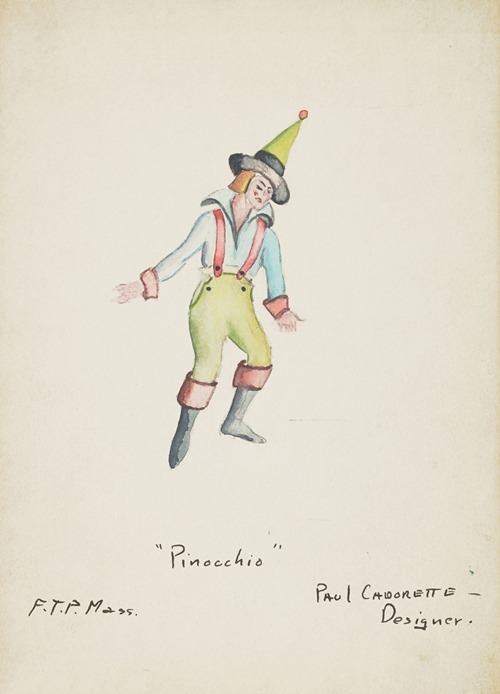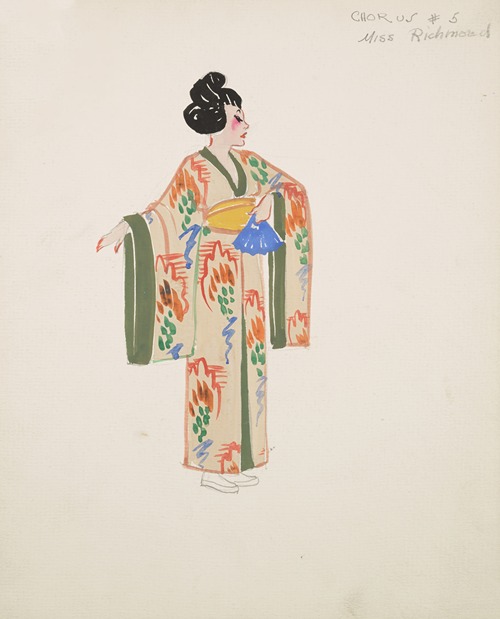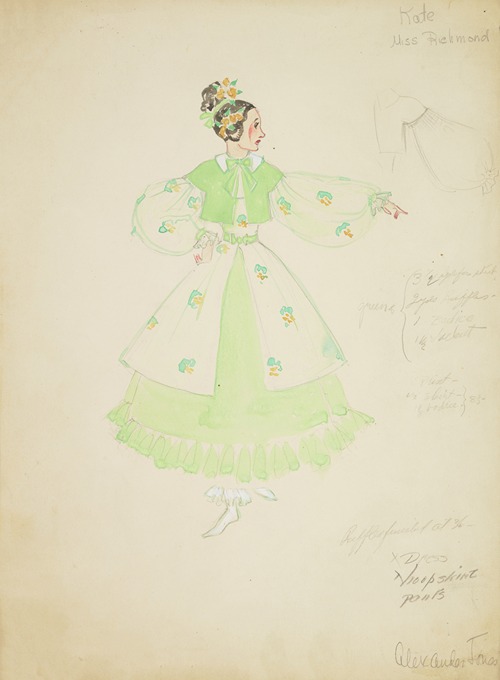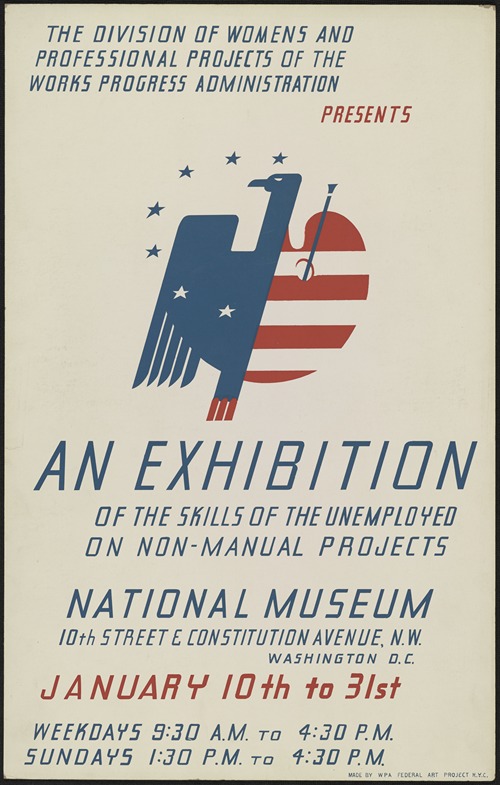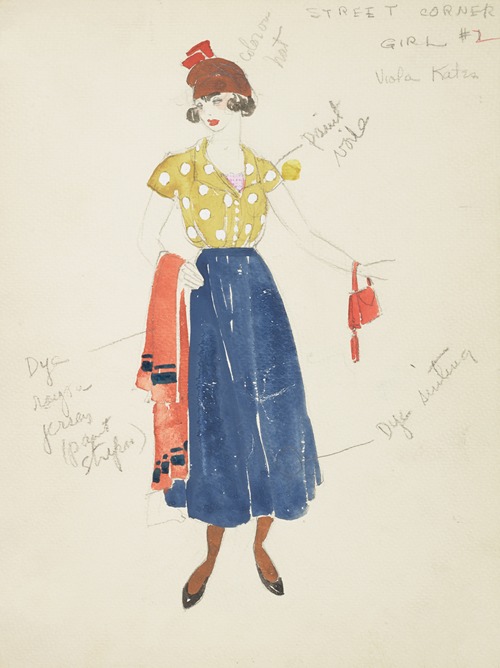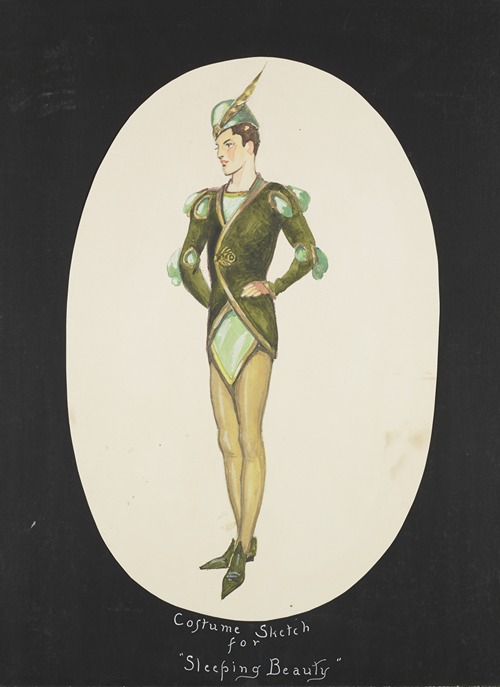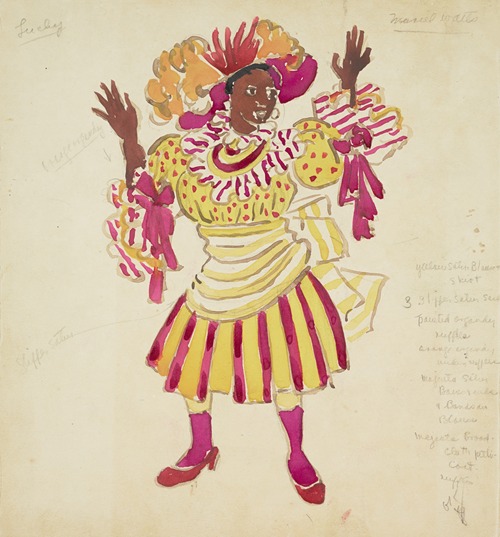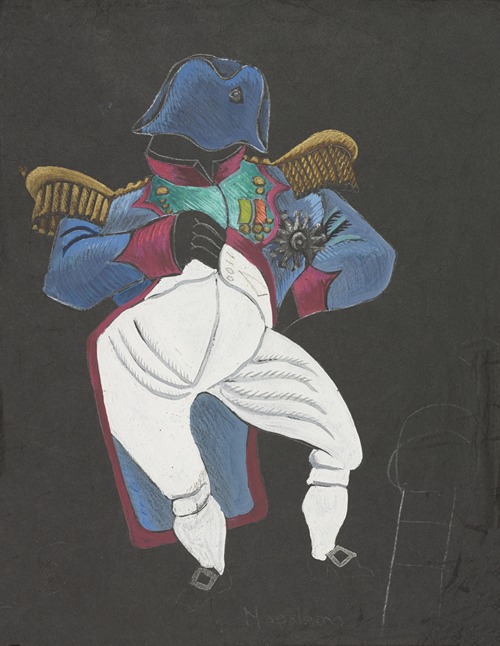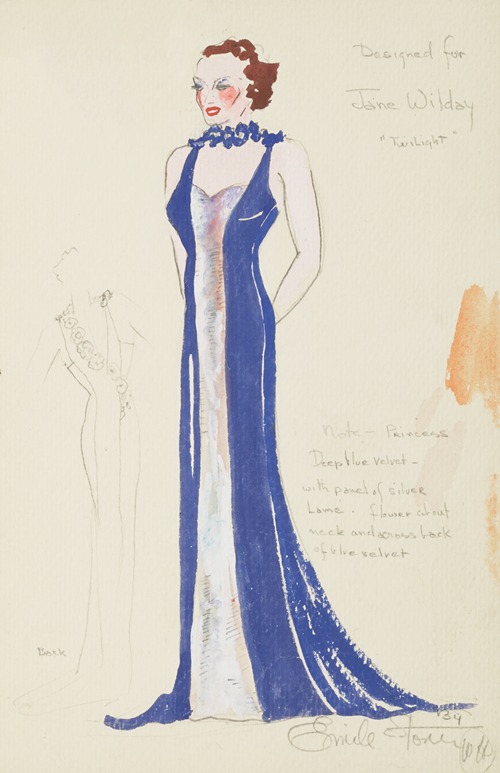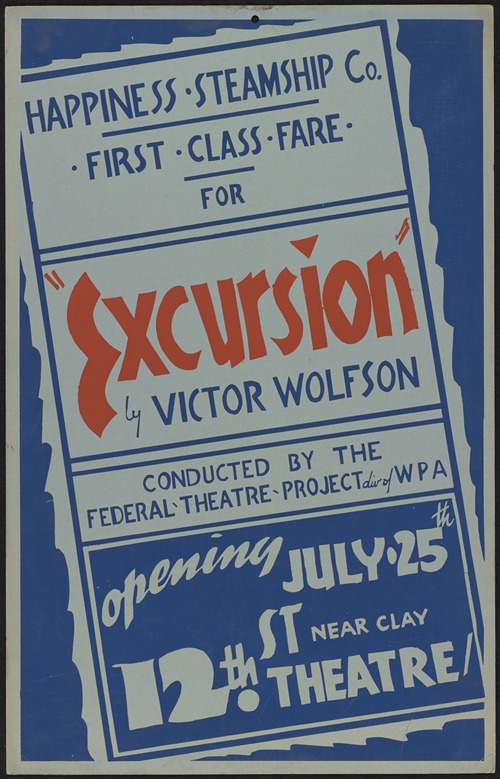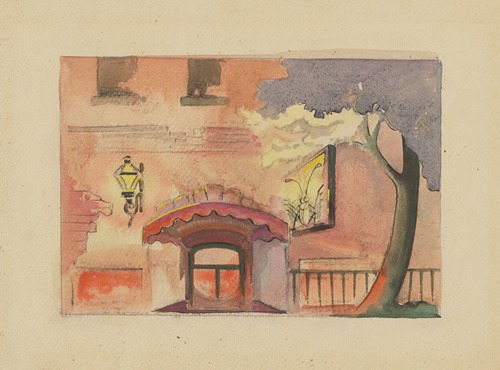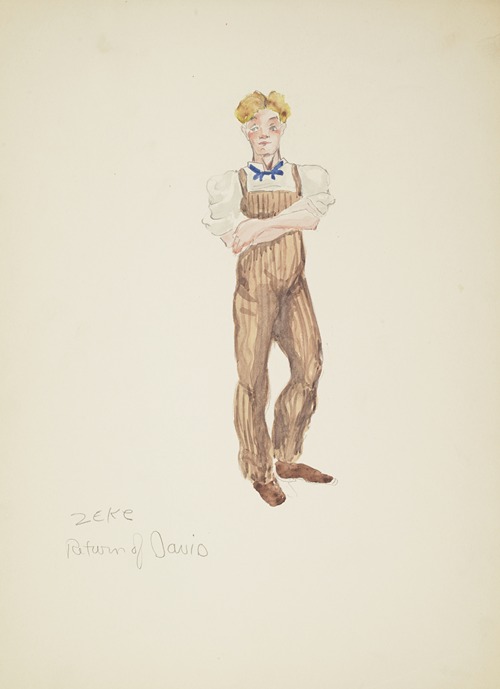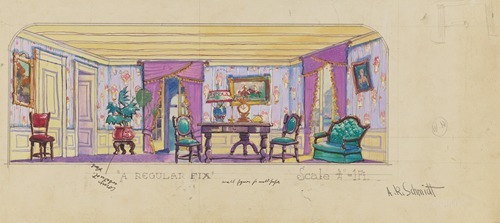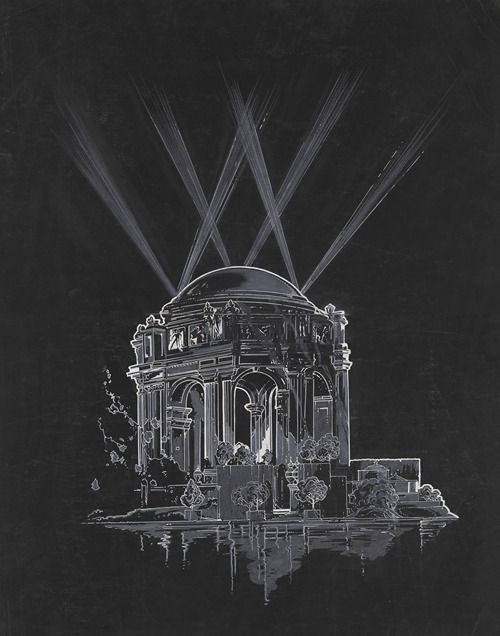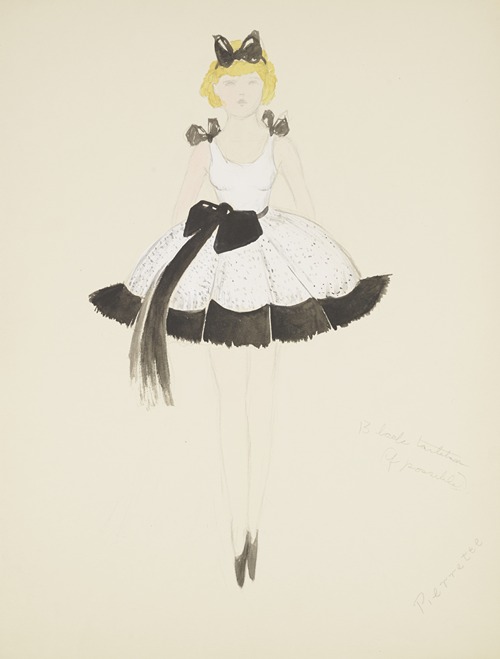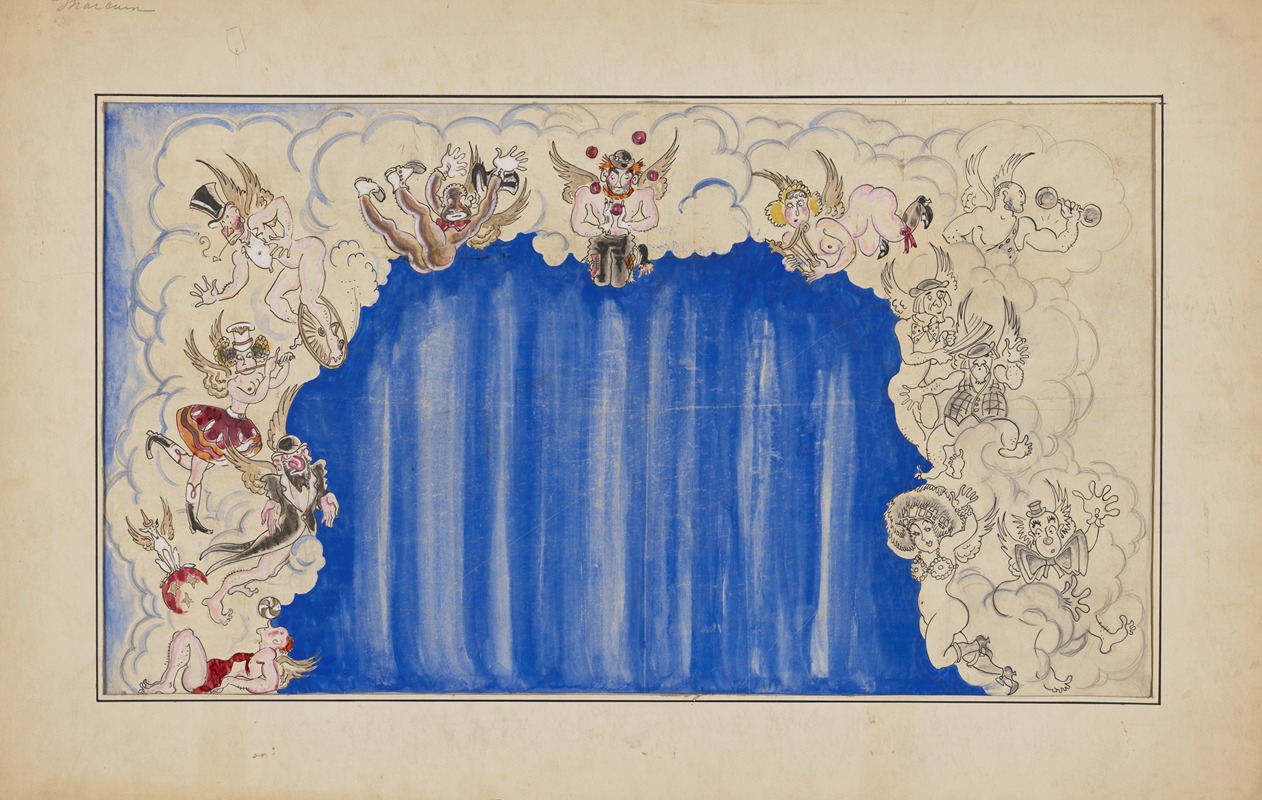
James Stewart Morcom was born in Kentucky on July 28, 1906 and grew up in Houston, Texas. After graduating from Central High School in 1924, Morcom moved to New York City in 1926 to attend the Grand Central Galleries Arts School and the Anderson-Milton School of Theatre. He also joined the Scenic Artists Union in 1926. When S. L. Rothafel opened the Roxy Theatre at Seventh Avenue and Fiftieth Street in 1927, Morcom worked as an Assistant Director for the acclaimed producer and scenic designer Clark Robinson. His tenure lasted four years. In 1931 Morcom married his childhood classmate Cecile Cobb.
Morcom began designing for the brand new Radio City Music Hall in 1933 as an Assistant to Clark Robinson, the Music Hall's second Art Director, and continued to work with Robinson on various creative projects that included plays, musicals, night club revues, and motion pictures. Facing hard times and unemployment in the 1930s, Morcom found work in the early years of the Federal Theatre Project (FTP) for approximately 6-8 months. During this same period he also designed windows for the National Shoe Company, and created back drops for the Columbia Burlesque theater chain before leaving the United States in 1936 to work in London for Raoul N. Dubois on Cochran's Coronation Revue.
After seeing Orson Welles perform on stage in Dr. Faustus, Morcom started working for Welles' Mercury Theatre Productions designing the sets at union minimum salary in exchange to be cast as an extra in the plays. Morcom designed sets for Welles' Five Kings, Too Much Johnson and Native Son. In 1940 Morcom took on various assorted projects, such as designing for the Ford Theatre Ballet and Sue Hastings Marionettes at the New York World's Fair, designing for productions at Madison Square Garden, the Gay White Way Club in New York City for George White, and the Ballet Caravan.
Before entering the Army in May 1942, Morcom created numerous ballet sets for the prominent choreographer, director, and performer, Eugene Loring. Morcom served in the Special Service Arts Department in WWII, designing sets and costumes for productions in Paris and London. After WWII, he stayed in London and attended the Royal Academy of Dramatic Arts on the GI Bill of Rights and studied acting. Once Morcom returned to New York City he began to design for such celebrated clientele as Billy Rose's Diamond Horseshoe, the New York City Ballet, and designed costumes for Radio City Music Hall in the late 1940s. Morcom became the fifth Art Director for Radio City Music Hall in 1950, and retired from the theater in 1973. Morcom was succeeded as Art Director by John William Keck.
James Morcom participated in an oral history interview, conducted by Lorraine Brown on May 10, 1977, for the Special Collections & Research Center for the Federal Theatre Project at George Mason University. He died on May 28, 1988.
John William Keck, son of the well-known American sculptor Charles Keck, was born in Greenwich Village, New York City, on December 4, 1929. He graduated from the High School of Music and Art and attended Pratt Institute. Keck got his start as a scenic painter working in summer stock in the 1950s, and eventually became a well-respected scenic designer in the New York theater community. Keck was a designer at Radio City Music Hall for several years before he succeeded James Stewart Morcom as Art Director in 1973, and also worked at Nolan Scenery Studios. He resigned from Radio City Music Hall in the spring of 1980, then moved on to design sets for the Metropolitan Opera House. He died on April 3, 2001.
